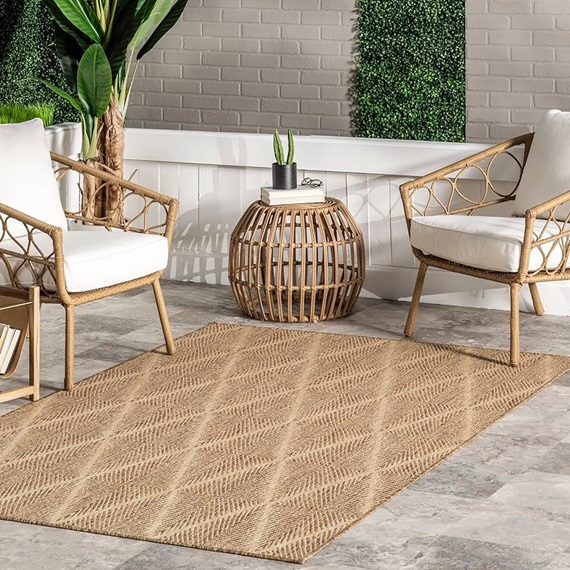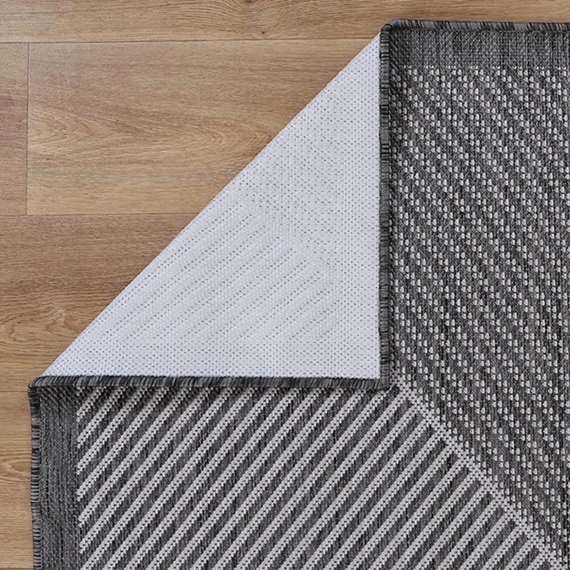A few things can help you turn your patio into a blooming retreat, but nothing brings a space together like an outdoor rug. Sofas, coffee tables, and umbrellas are examples of traditional outdoor furniture and décor that can last for many years; carpets can do, too, if you make the right decision. Adding a rug to the decor puzzle can upgrade any outdoor space.
What Is an Outdoor Carpet?

Comparing outdoor rugs to their indoor counterparts is the best approach for understanding what they are. Although an indoor carpet has many advantages as an outdoor rug and is quite luxurious, it can’t endure the severe outside elements.
Outdoor rugs frequently contain UV-stable fibres like polythene and polypropylene, meaning they won’t deteriorate in direct sunshine. In addition, they resist water and even mould and mildew because of their weatherproof construction.
What Is Indoor Outdoor Carpeting?
If you’re browsing for a stylish and practical outdoor carpet, you’ll notice it comes in two main varieties: standard outdoor and indoor/outdoor rugs. The second term refers to a carpet (or rug) resilient enough to endure outside living conditions and soft enough to seem like it belongs indoors.
These rugs are often made from materials tried and tested for durability compared to carpets and rugs only intended for indoor usage. They usually employ synthetic materials like plastic or plant fibres like hemp or seagrass.
While indoor rugs are only meant for indoors, you can easily combine indoor/outdoor rugs into any part of your home, including your outdoor area. Families seeking both the comfort of the inside and the durability of the outside choose this carpeting option as the most convenient one. Warmth and sophistication, years of use, modern style and easy maintenance are some of the many benefits of indoor/outdoor rugs.
How to Choose an Outdoor Rug for Your Patio?

What you plan to use the outdoor carpet for will determine what kind you should get. Safeguarding and preventing surface area damage, ensuring safety by preventing slips and falls and enhancing a space’s aesthetic appeal are the three main reasons to buy an outdoor rug.
However, also consider breathability. Mould growth is likely to occur if the rug’s material prevents airflow. Longevity and maintenance are also important factors, especially if you want to use it in high-traffic areas or on surfaces frequently exposed to the weather.
Consider the Surface
In addition to size and colour, it’s helpful to consider the surface’s substance and quality. It may significantly affect the rug’s lifespan and the space you’ll place it in. Based on popular outdoor spaces, consider the following.
Concrete
Concrete can be porous unless sealed, which could cause problems for some outdoor rugs. Choose a permeable carpet if possible, as these allow moisture to escape and prevent mildew.
Grass
Covering a grass area with a rug traps moisture, much like concrete. Thus, even if the carpet is breathable, it’s still resting on damp ground, which will cause mould and mildew to grow on its backing over time, progressively compromising its integrity. Consider installing temporary flooring, like the typical plastic or wood composite click-lock tiles. That can act as a foundation and aid in the rug’s drying process once it becomes wet. Alternatively, hang the rug occasionally and let it dry completely in the sun.
Steel
Metal-floored balconies and decks are common in metropolitan or coastal environments. Although they could appear more resilient, they’re nevertheless susceptible to rust and corrosion, particularly in humid regions and wet weather. Installing click-lock tiles beneath the rug can be helpful in this situation.
Tile
Porcelain or ceramic tile used outside may be susceptible to moisture absorption from rugs, particularly if the grout is rubber-backed. Ensure the grout is properly sealed to prevent the growth of mould and mildew.
Wood-stained Deck
Both synthetic and natural carpets might affect the deck’s staining. The rug will unavoidably be wet for a while when it rains. This would promote mildew growth in the covered deck’s section by keeping the area beneath the carpet damp for longer than the rest. While synthetic materials such as polyester don’t absorb water, natural fibres do and worsen the mildew issue. Although mildew is an annoyance, it is removable with bleach.
What Size Do You Need?
The ideal rug size for your patio depends on where and how you want to use the rug. If you plan to use one as the foundation for your outdoor furniture, be sure it has adequate room underneath the table and the chairs. The same is true for table settings. To make it safer and simpler, as a general guideline, leave at least 15 cm of extra rug on all sides. You wouldn’t want someone to fall if a chair gets caught on the edge while being slid to sit at the table.
It’s best to choose an outdoor rug that fits the coffee table and the two front legs of the sofa if you’re looking for a smaller option. If your balcony is small, choose a runner that covers the entire space for a complete cover-up.
Materials

Synthetics
Olefin, or polypropylene, is the preferred material for outdoor use. It has a reputation for being breathable and moisture-wicking. In addition to being stain and fade-resistant, polypropylene carpets can withstand spills, splatters, and even natural elements.
While polyester, nylon, and acrylic are substitute synthetic materials, their longevity varies. However, compared to 100% natural fibres, synthetic materials typically have a higher level of resilience. Natural fibres like cotton or jute found in synthetic rugs frequently serve as a haven for bacteria and fungi.
All-Natural Fibers
Natural fibre rugs may seem like a great idea for an outdoor area, but they frequently cause more harm than good. Catalogues and advertisements often glorify plant-based fibres as outdoor essentials, such as seagrass, jute, and sisal. Since seagrass is the softest material, sisal and jute in braided or open weave styles encourage ventilation and evaporation.
However, to capture and retain moisture, they’re frequently made with either external fabric borders, an additional glue-based backing, or a rubber backing that is pasted on. If you insist on purchasing a natural fibre rug, remember to periodically hang it in the sun to dry it out and encourage airflow.


